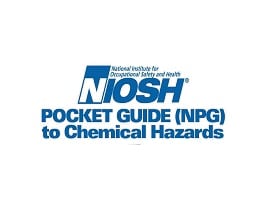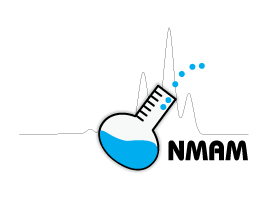Cobalt

Overview
CAS No. 7440-48-4
Cobalt (Co) is a hard, gray metal that occurs naturally. It is found in rocks, soil, water, plants, and animals, including people. It can harm the eyes, skin, heart, and lungs. Exposure to cobalt may cause cancer. Workers may be harmed from exposure to cobalt and cobalt-containing products. The level of harm depends upon the dose, duration, and work being done.
Cobalt is used in many industries. It’s used in cutting and grinding tools, pigments and paints, colored glass, surgical implants, batteries, and some electroplating. Its radioactive isotope is used in imaging and food irradiation. Some examples of workers at risk of being exposed to cobalt include the following:
- Workers who work in industries processing cobalt-alloys
- Miners who work in the metal mining industries
- Workers involved in the production or use of cutting or grinding tools
- Employees who work at nuclear or irradiation facilities
NIOSH recommends that employers use Hierarchy of Controls to prevent injuries. If you work in an industry that uses cobalt, please read chemical labels and the accompanying Safety Data Sheets for hazard information. Visit NIOSH’s page on Managing Chemical Safety in the Workplace to learn more about controlling chemical workplace exposures.
The following resources provide information about occupational exposure to cobalt. Useful search terms for cobalt include “cobalt metal dust,” “cobalt metal powder,” “cobalt metal fume,” and “elemental cobalt.”
NIOSH Chemical Resources
Related NIOSH Resources
- NIOSHTIC-2 search results on cobalt—NIOSHTIC-2 is a searchable database of worker safety and health publications, documents, grant reports, and journal articles supported in whole or in part by NIOSH.
- Immediately Dangerous to Life or Health (IDLH) Values of Cobalt Metal Dust and Flame—NIOSH reviews relevant scientific data and researches methods for developing IDLH values.
- NIOSH Worker Health Study Summaries—NIOSH conducts research to prevent illnesses and injuries in the workplace. The NIOSH Worker Notification Program notifies workers and other stakeholders about the findings of these research studies.
Selected Publications
- NIOSH Occupational Hazard Assessment: Criteria for Controlling Exposure to Cobalt—DHHS (NIOSH) Publication No. 82-107. This report increases awareness and recommends work practices to reduce exposure to the toxic effects of cobalt and degree of worker exposure to substances containing cobalt.
- Elements by ICP (7300)—Sampling and measurement data from NMAM, fourth edition.
- Cobalt and Compounds (7027)—Sampling and measurement data from NMAM, fourth edition.
- Specific Medical Tests or Evaluations Published in the Literature for OSHA-Regulated Substances: Cobalt Metal, Dust, and Fume —DHHS (NIOSH) Publication No. 2005-110 (2004)
- Occupational Health Guideline for Cobalt Metal Fume and Dust—This guideline helps stakeholders conduct effective occupational safety and health programs.
Related Resources
- ASTDR ToxFAQs for Cobalt
- ATSDR Toxicological Profile for Cobalt
- EPA Chemistry Dashboard
- EPA Hazard Summary: Cobalt Compounds
- EPA Radionuclide Basics: Cobalt-60
- NLM Haz-Map: Cobalt
- NLM MedlinePlus: Cobalt Poisoning
- NLM TOXNET: Cobalt, Elemental
- NOAA Cameo Chemicals: Cobalt
- NTP Review of the Toxicological Literature: Cobalt Dust
- NTP Report on Carcinogens: Cobalt and Cobalt Compounds
- OSHA eTools: Sawmills > Cobalt Dust
- OSHA Hazard Communication
- OSHA Occupational Chemical Database: Cobalt Metal (Dust & Fume)
- New Jersey Hazardous Substance Fact Sheet: Cobalt
- Texas Health and Human Services Fact Sheet: Cobalt
International Resources
- Canadian Centre for Occupational Health and Safety (CCOHS): Cobalt
- European Chemicals Agency (ECHA): Cobalt
- Gestis Substance Database
- IARCH Monograph (Volume 86): Cobalt
- International Chemical Safety Card (ICSC): Cobalt
- IPCS INCHEM: Criteria Document for Swedish Occupational Standards: Cobalt and Cobalt Compounds
- IPCS INCHEM: OECD SIDS Initial Assessment Report: Tungsten Carbide (contains Cobalt binder)
- OECD Global Portal to Information on Chemical Substances
- United States Global Survey (USGS): Cobalt Statistics and Information
- WHO (CICADS) 69: Cobalt and Inorganic Cobalt Compounds



